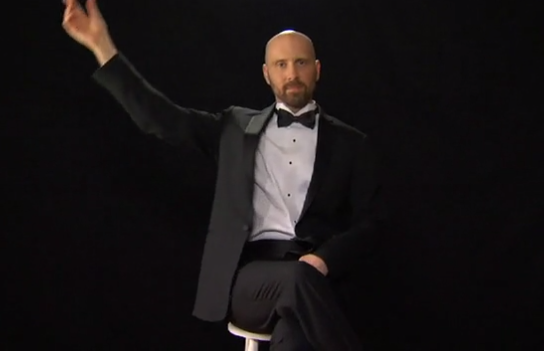Why Do Gay Men Lisp, Documentary Asks; But Is There Really An Answer?

“Do I Sound Gay?” is a new documentary opening up at this weekend’s DOC NYC festival. It attempts to answer the question that many of us are hesitant to ask: Why do some gay men “sound” gay — that is, speak in a manner of speech in which others are more likely to view the speaker as being a homosexual male. Well, researchers aren’t exactly sure why this speech pattern is popular in cultures throughout the world, but they do have a few ideas about its origins.
The Lisp
Lisping is a speech disorder characterized by the inability to correctly pronounce sibilant consonants, or as we know them, the sounds of s and z. Many incorrectly associate a lisp as being part of homosexual speech, but in actually, around 10 percent of the U.S. population speaks with a lisp. Nearly five percent of first-graders enter school with a functional speech disorder, including yours truly. I still sometimes have nightmares about "she sells seashells down by the seaside." There is no clear known cause for the lisp, and it is in no way linked to a child’s future sexual preference.
While lisping is surely not limited to gay men, there’s no denying that as a society we associate a certain manner of speech with this sexual orientation. In her essay, Beyond the Lisp, speech therapist Dr. Caroline Bowen describes other speech mannerisms associated with homosexuality, such as precise articulation, emphasized final stops on consonants, and prolonging consonants and vowels.
Unfortunately, it’s this manner of speech that makes gay men a target for abuse and bullying, and Bowen explains that one of the most popular questions she’s asked is “Can I get rid of my gay lisp?” So, if this speech isn’t purposely adopted, where does it come from?
Spending More Time With Women
Linguist professors Henry Rogers and Ron Smyth attempted to find out why some gay men “sound” gay in their 2002 study, Searching for Phonetic Correlates of Gay- and Straight-Sounding Voices. The researchers asked people to listen to the recordings of 25 men of mixed sexual orientation and try to guess which sexuality the speakers identified as. Results showed that in 63 percent of the cases, the listeners correctly identified the sexual orientation of the speakers.
While the study may have proven the existence between speech mannerisms and sexual orientation, it failed to show where this link came from. Instead, the researchers hypothesized that some gay men may simply subconsciously adopt certain female speech patterns.
“Perhaps you picked this up when you were young by listening to more women than men?,” we hear a speech therapist explain in the trailer for “Do I Sound Gay?,” backing this theory.
The Need To Belong
Bowen offers a different explanation for the existence of the “gay voice.” The speech therapist suggests that gay men may take on the dentalized or interdental s pattern as an indirect statement about wanting to identify with or be a part of the gay community. This is further backed by some gay men’s claims that they choose whether to sound gay or straight, depending on who they are with. She goes on to compare this to individuals who may switch from ebonics to standard English, depending on their company.
Bryan Lowder, a self-identifying gay man, attempted to take a crack at this mystery from a more personal perspective. Although Lowder acknowledges studies that point to physiological differences to account for the prominence of the “gay voice,” he believes it most likely came from gay men copying the speech of girls that they hang around with in school because perhaps they identify with women better at a young age.
“It’s going to be very hard to sort out in the end where this thing is coming from, but it’s probably going to be a mix, as with a lot of things of nature and nurture.”
So, alas, we are left with no real explanation of the “gay voice’s” roots, but still Lowder emphasizes that “when you encounter the lisp in the wild,” this speech pattern does not actually mean anything or signify anything in particular.



























